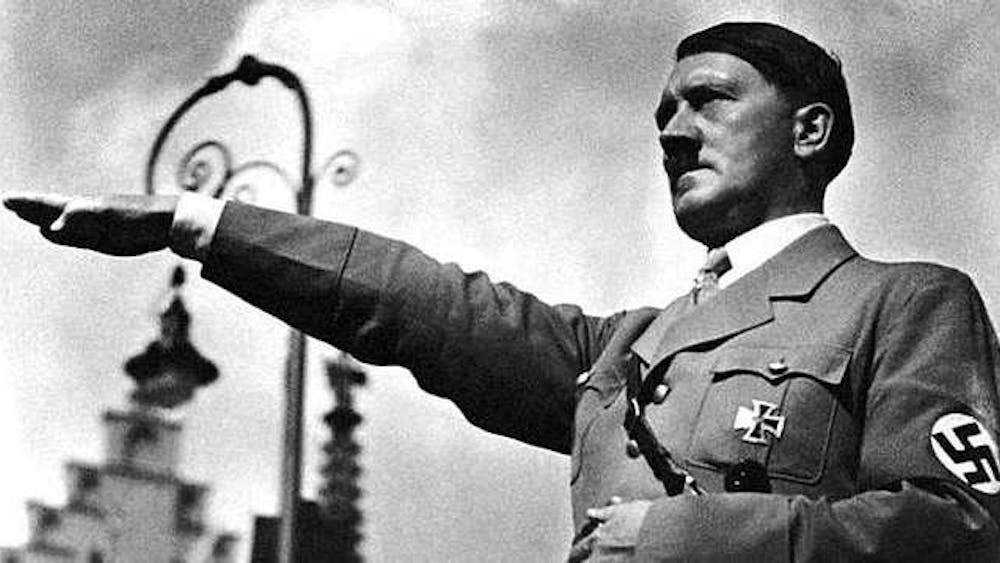The most intense religious experience I had during this past Easter weekend was watching “The Passion.” As a member of the Folk Choir, I sang at Holy Thursday Mass, Good Friday Stations of the Cross and two Easter Sunday liturgies. Yet no service made as real to me what Easter and the entire Catholic faith celebrate as that melodramatic Mel Gibson film.
There is nothing wrong with a sorrowful Good Friday confession or joyful Easter homily. Yet I, like many of my millennial comrades, am a visual learner. I learn best through stories — and not just having them told to me, but seeing them myself. I often find my mind wandering during readings in the beautiful Basilica of the Sacred Heart. I miss a phrase or two and attempt to rejoin, but miss the main message.
My mind could not wander while watching “The Passion.” I always imagined the crucifixion as excruciatingly painful — it can’t be fun to have nails hammered into your palms and feet and then let your entire body weight hang from them—but I never thought about the drawn-out suffering of Christ that lasted hours before the crucifixion. Jesus realizes that Judas has betrayed him and anticipates what is to come. Jesus spends hours getting passed in chains between the Jewish people, high priests and Pilate. Jesus is stripped and then whipped so much that there is barely any flesh left covering his bones.
I never realized what the word scourged meant before the film. Somehow, I had confused it with scorned. Though being scorned is not desirable, being scourged, or whipped with leather that has nails and screws sewn to it so that it can pierce and tear open your flesh, is unimaginable. I shiver to think of the thousands of people who suffered this barbaric punishment and am devastated that this was done to God incarnate.
Jesus allowed drunken idiots to torment him, idiots who didn’t realize that if they kept hitting him, he would fall down and not be able to carry the cross to his crucifixion site. Am I one of them?
Or am I Simon of Cyrene, an uninvolved passerby unexpectedly asked to help Jesus carry his cross? In the film, he protests that this is not his affair, that he is an innocent man who should not be involved in this guilty man’s crime. Little does he know how blessed he is to help Jesus carry his cross. During the long, tiring journey, he starts to realize that there is something different about this criminal, but can’t put a finger on it. When his job is finished, he almost doesn’t want to leave.
One friend pointed out that Christ does not say one word to Simon through the entire film. He thought this could be related to how non-mystics on earth are often asked to carry the cross without verbal instructions or affirmation from the divine.
It was only while watching the film that I marveled at the fact that Veronica was able to get close enough to Jesus to wipe his face. When going through the Stations of the Cross at the Basilica, I failed to realize how much of a miracle it was that this young woman weaved through guards and a surrounding mob to perform an act of love. Moreover, the fact that Mary, Jesus’ mother, was able to meet her son on his path to Golgotha was also nothing short of a miracle.
Jesus on the cross is often pictured in churches as thin, stripped of clothes except his garment, with his side pierced. Yet I have never seen him presented as such a gruesome, bloody, beaten-up mess as in that film. In looking only at G-rated images of Christ crucified, it is too easy to become desensitized to the grave and savage crucifixion. God did not die by the sterile injection of the 21st century, but by the barbarous and cruel cross.
The real passion was not filmed. There were no cameras to add gravitas to the event — it may have felt like a routine execution of a messianic pretender. For a record of the most important moment in history, I must rely on four gospels and any other historical records from that time period.
Though Mel Gibson’s film was likely not 100 percent accurate, it is a dramatic representation of what happened. This is why every student, every human, should watch “The Passion” — not because it is the most truthful account of what happened, but because it may give rise to emotions you would have felt if you had seen the real passion. It will force you to spend two hours dwelling on the horror that the historical man of Jesus Christ underwent thousands of years ago and will cause you to ask what relation his suffering has to you today.
Yet it is already two weeks after Easter, and isn’t “The Passion” something to watch on Good Friday? The passion — and the Resurrection — is something to watch or commemorate every day, for only then can we live with what matters being foremost in our minds.













